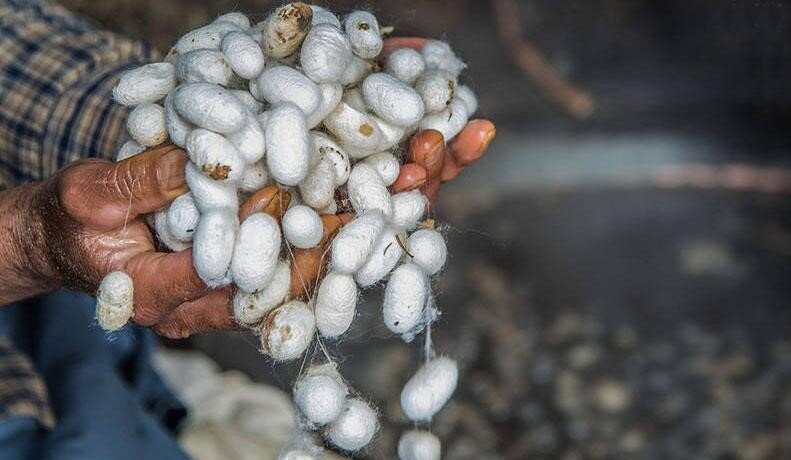UNESCO-designated silk spinning to improve tourism in Gilan

TEHRAN – The UNESCO-tagged traditional skill of silk spinning holds potential to boost tourism in the northern province of Gilan.
The traditional art and production of silk has the potential to attract enthusiastic tourists and travelers who seek to witness it firsthand.
Gilan, being a hub of silk production in the country, boasts several historical edifices associated with this craft along with several thriving workshops run by skilled artisans.
In addition, these historical monuments, many of which are already registered on the national heritage list, have the potential to be transformed into attractive tourist destinations.
By focusing on the preservation of local customs and culture, it is possible to boost agritourism and showcase silk products in the region.
The art of sericulture entails utilizing traditional methods, techniques, and crafts related to cultivating and nurturing mulberry trees, as well as breeding silkworms and producing silk for weaving.
The key to achieving high-quality cocoon production is ensuring that mulberry trees are grown or maintained in optimal conditions, taking into account factors such as light, soil nutrients, ventilation, and humidity according to the climatic conditions. This creates the basis for both quantitative and qualitative leaf production.
Mulberry leaves are the primary food source of silkworms. As the silkworms mature, they produce eggs which require careful nurturing to ensure successful cocoon formation, where the adult silkworms undergo their transformative journey.
During the subsequent phase, the artisans engage in the creation of silk by utilizing cocoon threads, interlace those threads to construct silk fabrics, and subsequently incorporate the textiles into various handicrafts.
Silk threads are the primary material used by rural artisans to create a diverse range of handicraft items, including cloth and carpets.
The significance of this element is amplified by the fact that silk thread production is often a family and community affair, which involves unique rituals and customs. The collective effort of families, neighbors, and colleagues not only enhances the social fabric of the community, but also ensures the sustainability of local cooperation.
In Gilan, both rural and urban families have a long-standing tradition of raising silkworms, producing silk, and creating silk products. This is not just a significant aspect of their culture, but also an important source of income for these families even before they receive earnings from other agricultural pursuits.
The art of sericulture and the breeding of silkworms is not only an agricultural practice in Gilan region, but also a valuable cultural heritage of the area. The ideal geographical and climatic conditions of this province have helped establish and sustain this industry throughout the ages.
For more than three millennia, silk thread produced in Iran has been used to make clothing fabric and for weaving Persian rugs and there are silk makers in Gilan, who still practice the trade their ancestors did some 3,000 years ago.
In 2021, traditional skills of silk spinning and keeping silk cocoons were collectively inscribed on the national heritage list.
Last year, sericulture and traditional production of silk for weaving gained UNESCO status jointly for Iran, Afghanistan, Azerbaijan, Turkey, Tajikistan, Turkmenistan, and Uzbekistan.
Gilan is known for its tourist attractions and warm-hearted and hospitable people. The people of Gilan from different ethnic groups, including Gilak, Talesh, and Tat, have come together and formed a very rich and diverse culture and customs.
The northern region was within the sphere of influence of the successive Achaemenian, Seleucid, Parthian, and Sasanian empires that ruled Iran until the 7th century CE. The subsequent Arab conquest of Iran led to the rise of many local dynasties, and Gilan acquired an independent status that continued until 1567.
Besides, its sophisticated capital city of Rasht has long been a weekend escape for residents of Tehran who are looking to sample the famous local cuisine and hoping for some pluvial action–it's the largest and wettest town in the northern region. Gilan is divided into a coastal plain, including the large delta of Sefid Rud and adjacent parts of the Alborz range.
ABU/AM
